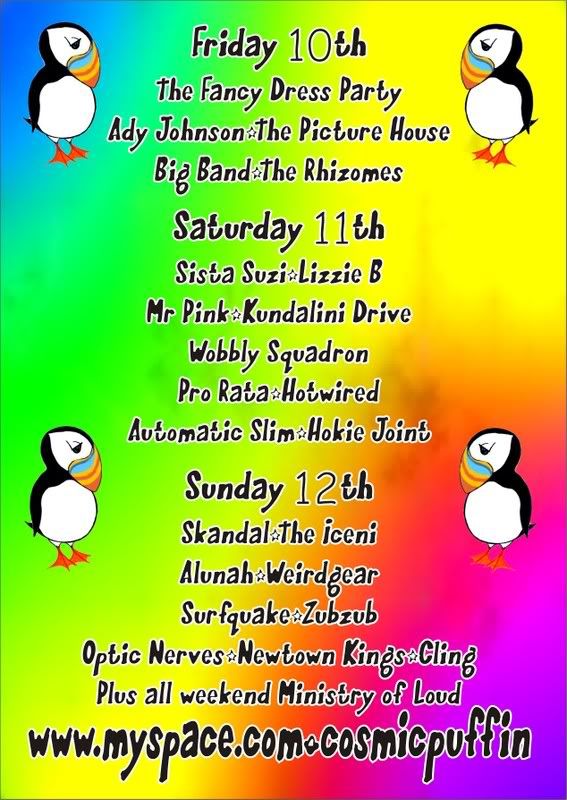In 1968, fury at the Vietnam war sparked protests and uprisings across the world: from Paris and Prague to Mexico. Tariq Ali considers the legacy 40 years on
Tariq Ali
The Guardian,
Saturday March 22 2008

In the prefigurative London of the 18th century, sexual experiments required the cover of break-away churches such as the Moravians and surreal Swedenborgians (for whom "love for the holy" was best expressed in the "projection of semen"): both preached the virtues of combining religious and sexual ecstasy. Sexual orgies were a regular feature of Moravian ritual, according to which penetration was akin to entering the wounds in Christ's side. William Blake and his circle were heavily involved in all of this and some of his paintings depicting this world were censored at the time. I hope this does not come as too much of a shock to my old friend Tony Benn and others who sing Jerusalem without realising the hidden meaning of:
Bring me my bow of burning gold!
Bring me my arrows of desire!
Bring me my spear!


The Big Question: How is the date of Easter determined, and why is it so early this year?
Friday, 21 March 2008
Why does the date of Easter vary by more than a month?
Because the ancient Egyptians and Hebrews used different calendars. The Egyptians had one based on the movement of the sun, which was passed on through the Romans and Christian culture to become the modern world's standard. The Jews had one based on the phases of the moon – as Islam does, which is why the month of Ramadan moves round the calendar and takes places at different times of the year each year, with Muslims waiting for sightings of the moon before they know what day it will begin.
Easter is one of the festivals which tries to harmonise the solar and lunar calendars. As a general rule, Easter falls on the first Sunday, following the first full moon after 21 March. But not always.


Why are there so many different definitions of a full moon?
An astronomical full moon, like an astronomical equinox, is not a day but a moment in time – which can be observed happening on different days depending on which side of the international date line you stand. And waiting for an event to happen made it impossible to plan ahead.
So they decided that the Paschal Full Moon (PFM) would not be an astronomical moon but an ecclesiastical full moon. These could be set down ahead of time, which is what happened from 325 AD. Astronomers approximated astronomical full moon dates for the church, calling them Ecclesiastical Full Moon (EFM) dates. Thus Easter was defined as the Sunday after the first EFM after 20 March. And that date was the appointed vernal equinox, regardless of whether it was or not. So we have a notional full moon following a notional equinox.
Why do we still have to use both solar and lunar calendars?
Easter is the time when Christians celebrate the Resurrection of Christ. According to the gospels he was killed three days before the Resurrection, around the time of the Jewish Passover. So Christians wanted to have their feast day around the same time as the Jewish festival which was fixed by the first full moon following the vernal equinox – the spring day when night and day are exactly the same length.
The problem comes because a solar year (the length of time it takes the earth to move round the sun) is 365 days, 5 hours, 49 minutes, and 12 seconds whereas a lunar year is 354.37 days. Calculating one against another is seriously complicated.
There have been various attempts to reconcile this, including the famous saltus lunae (the moon's jump) whereby one of the 30-day months in the lunar cycle gets arbitrarily shortened to 29 days. But the solar and lunar years diverge by 11 days every year. Scores of formulae have been devised to try to reconcile the two as a method of marking time.
http://www.independent.co.uk/news/uk/this-britain/the-big-question-


...
Absolute reality as revealed by metaphysical intuition is the ever-rolling stream of time...
...Bergson offers certain additional descriptive comments.
(1) Duration is a heterogenous flux or becoming. (2) It is irreversible, straining always towards the future. (3) It is continually creating newness or novelty, and hence is intrinsically unpredictable. (4) It is the inexhaustible source of freedom. (5) Its living reality can never be communicated by images or concepts, but must be directly intuited.
...


Este frio metereológico e psicológico, o clima hostil que compõe este reino tem piada, tem piada e é refrescante, quando não se está preso aqui.


No comments:
Post a Comment